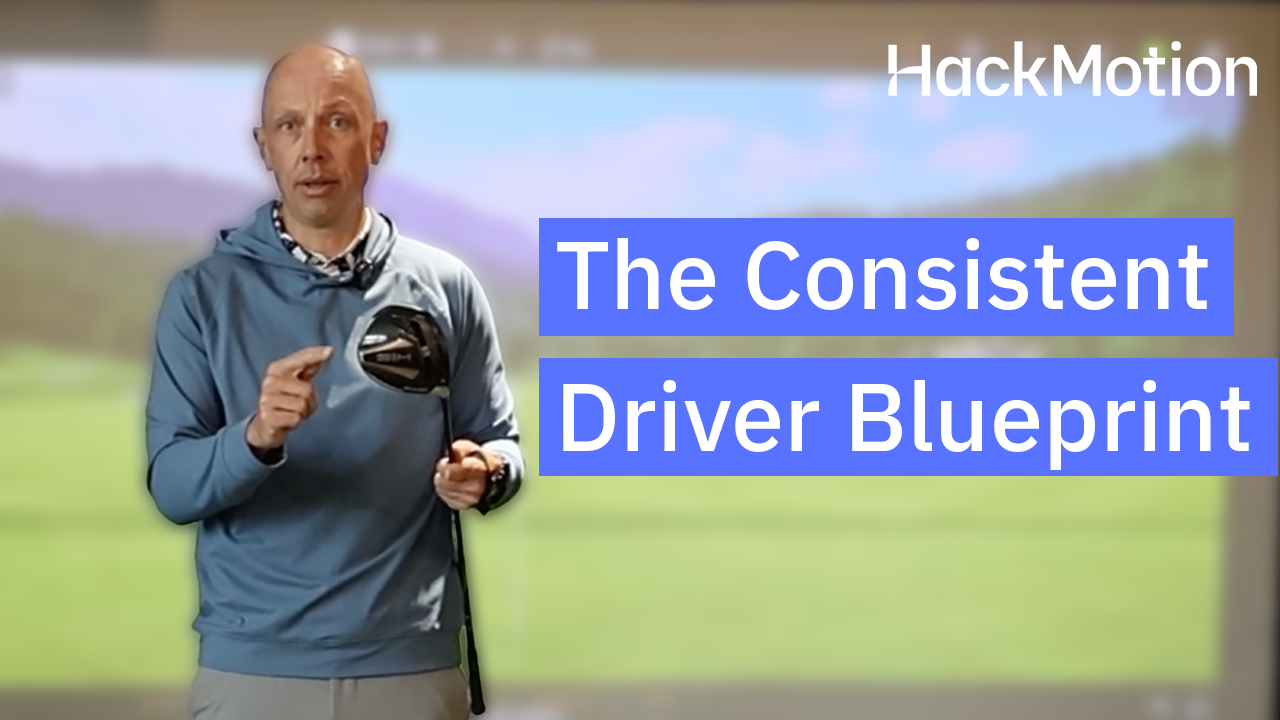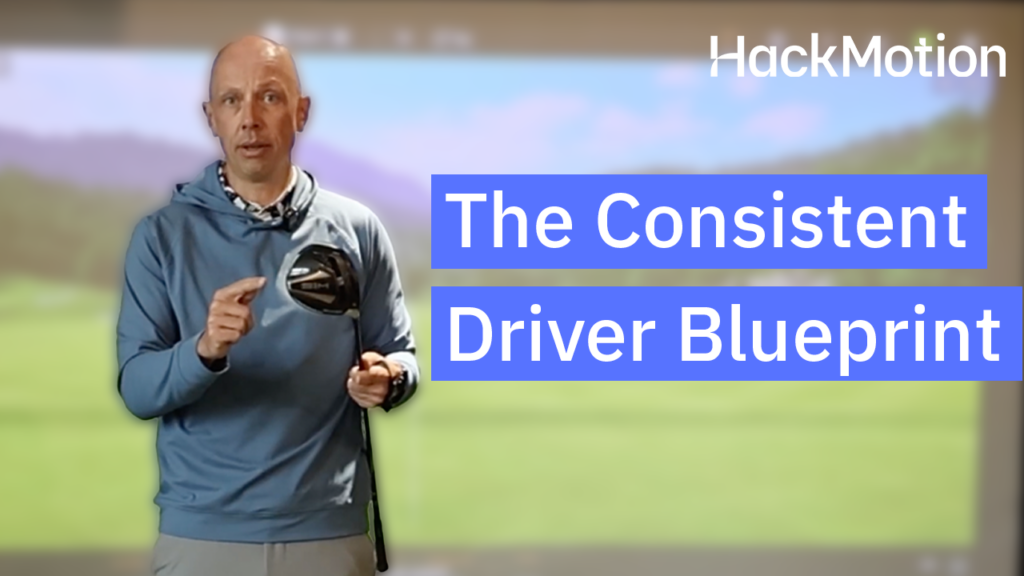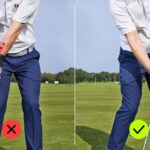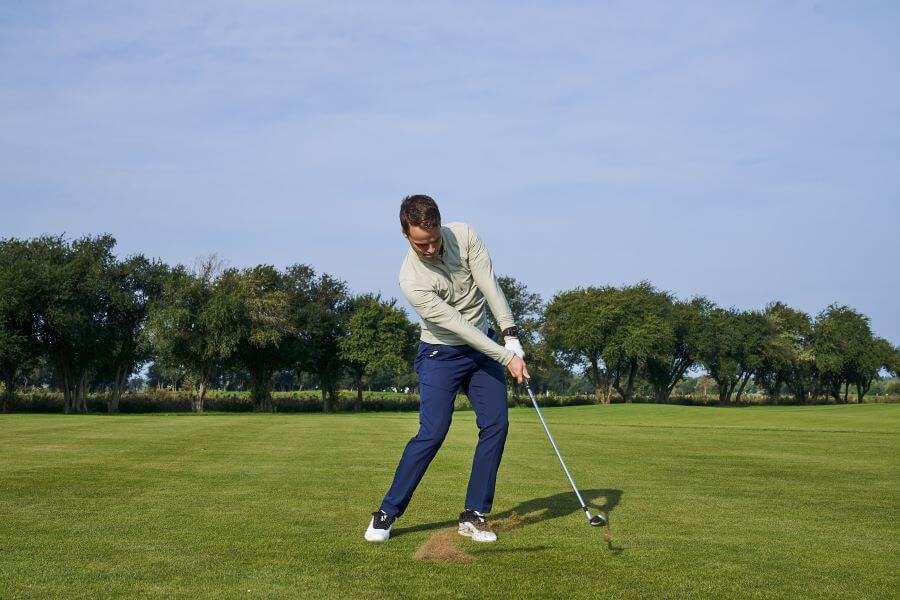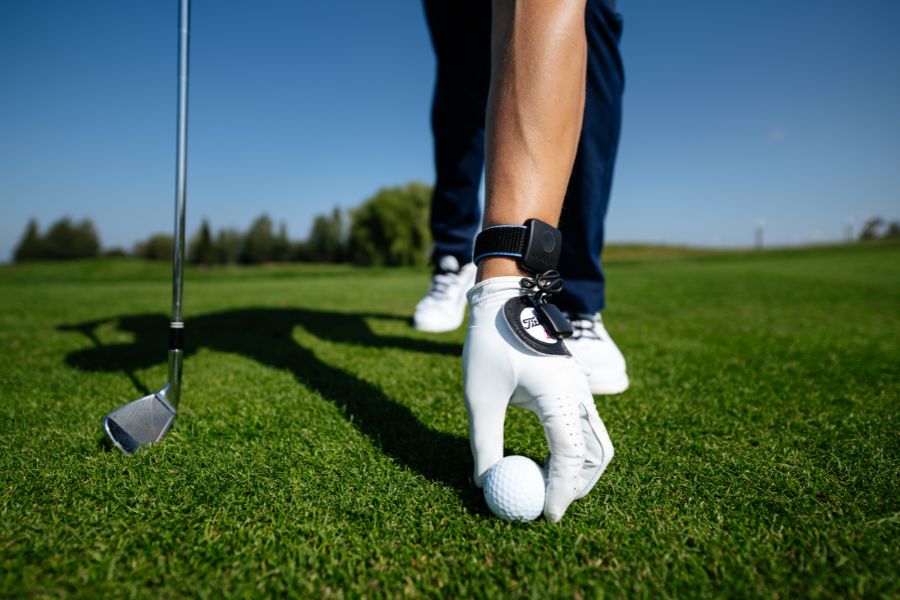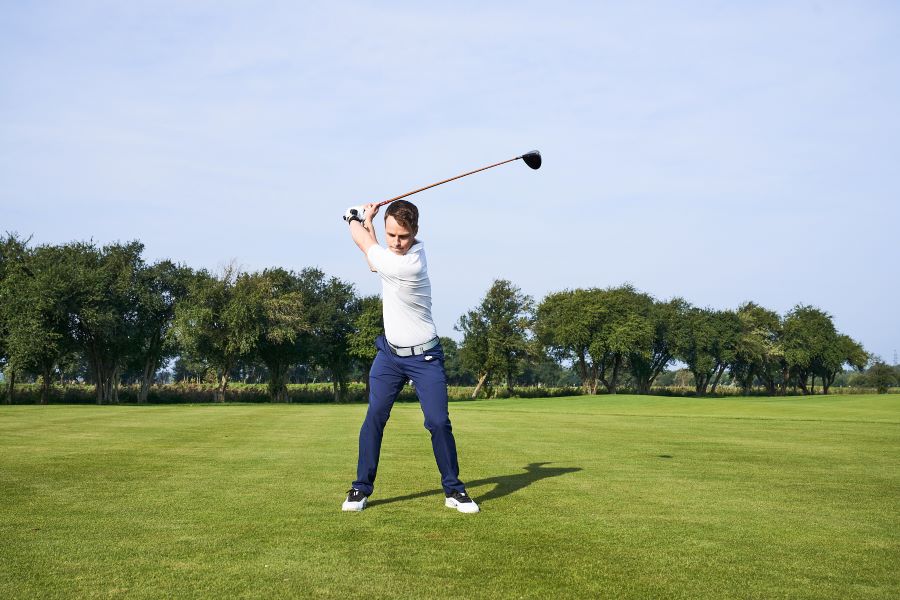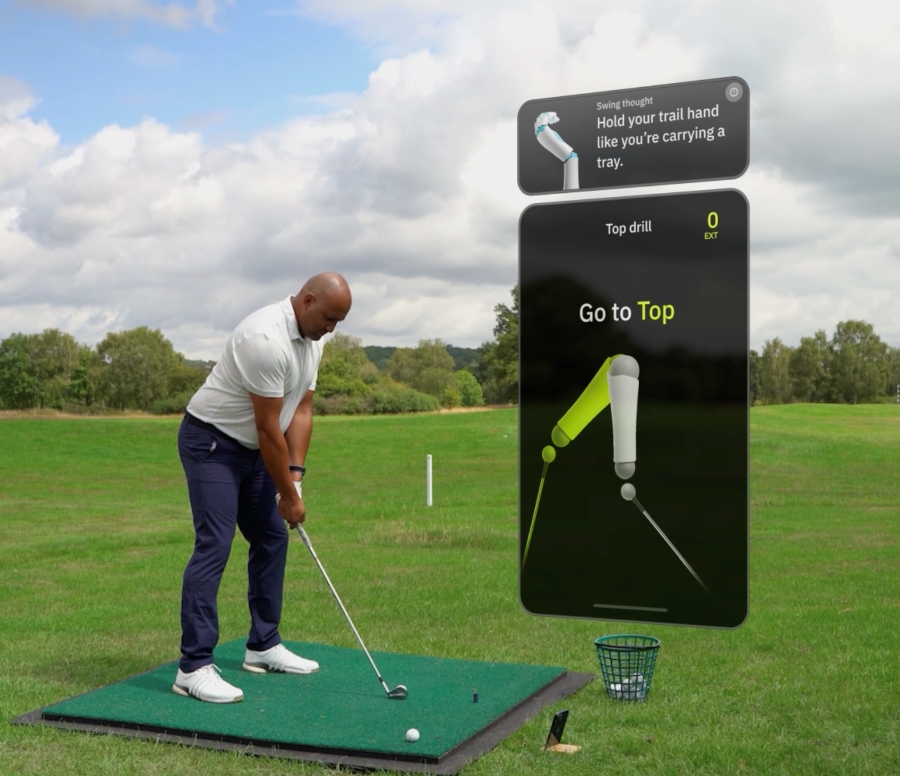Slow Motion Driver Swing (Step-by-Step Breakdown) – Create Launch, Speed & Face Control
When you slow a driver swing down frame by frame, it’s easy to see the swing itself isn’t all that much different than an iron swing.
You will need a different setup and body motion to work. With a driver, you’re still controlling the clubface with your wrists, but now you’re hitting slightly up, managing a wider stance, and creating side bend through your hips and spine.
Understanding these small differences is what lets you keep your power while improving contact.
Let’s walk through what happens in slow motion from setup to follow-through and how to train it using HackMotion feedback.
Driver Swing Sequence (Key Takeaways)
Here are the most important things to know about the slow motion driver swing:
- The wrist pattern stays similar to irons: slight lead-wrist extension at setup, more flexion by impact.
- You can hit up without flipping. Shift your hips forward to create a side bend so the club moves upward with a forward handle.
- Launch comes from body motion, not adding loft. The hips move forward, and the chest stays back.
- Relaxed arms create speed. Too much tension kills power and rhythm.
- HackMotion helps confirm proper extension at setup, flexion in transition, and extension only after impact.
Slow Motion Driver Swing: Step-by-Step Breakdown
Use the interactive slow-motion player below to see how the driver swing sequence unfolds.
Scroll, pause, and study each position in slow motion to see how the wrists, hips, and upper body work together to create launch, speed, and face control. Then move through the steps below for a full phase-by-phase breakdown.
Step 1: Setup
The driver setup is built for launch. The ball moves forward in your stance, and the upper body tilts slightly back. That small adjustment can change everything about impact.
Your wrists should look similar to an iron. The lead wrist is slightly extended, the trail wrist slightly flexed. This creates a neutral clubface and a clean takeaway.
Slow Motion Driver Swing – Step-by-Step
- Ball positioned just inside the lead heel.
- Spine tilted slightly away from the target; hips level, not leaned back.
- Hands near the lead thigh or shirt seam (not behind the ball).
- Lead wrist slightly extended, trail wrist flexed.
- Grip pressure is light enough to allow free wrist motion.
These videos are part of the HackMotion Driver Blueprint course. Take a look at the full course here to learn the complete driver system for launch, speed, and control.
Step 2: Takeaway (P1 – P2)
The first few feet of motion determine everything that follows. Golfers who are struggling need to focus on setup and takeaway, as this will address the majority of the issues in their game.
Keep your arms and body moving together while allowing the wrists to begin setting naturally. The club should move smoothly, with the face staying square and not rolling open. This is where most golfers get too handsy or lose their width early.
Slow Motion Driver Swing – Step-by-Step
- Clubhead stays outside the hands through the first foot.
- Chest, shoulders, and hands rotate together.
- Lead wrist begins to flatten, trail wrist gains a touch of extension.
- Face stays parallel to your spine angle—no early roll.
Step 3: Backswing to Top (P2 – P4)
At the top, your goal is a full shoulder turn without adding unnecessary wrist motion. A flatter lead wrist and fully extended trail wrist keep the face in check.
You don’t need to overswing with the driver in your hands. Structure at the top makes it easier to return to impact consistently.
Slow Motion Driver Swing – Step-by-Step
- Shoulders turn roughly 90°; arms stay connected to the chest.
- Hinge upward, not sideways—avoid opening the clubface.
- Lead wrist stays flat or slightly flexed; trail wrist fully extended.
- Stop the backswing when your lead arm reaches across your chest—not past it.
Step 4: Transition (P4 – P5)
This is where most golfers lose their structure. The hips need to slide slightly toward the target before the shoulders unwind. That shift creates the side bend that allows an upward strike without early release.
The lead wrist moves into flexion, the trail wrist stays bent, and the club shallows naturally.
Slow Motion Driver Swing – Step-by-Step
- Pressure shifts to the lead side before rotation begins.
- Hips move forward, adding tilt to the shoulders.
- Lead wrist moves into flexion (“reverse motorcycle” feel).
- Trail wrist stays extended to hold lag.
- Shaft shallows slightly as the club approaches delivery.
Step 5: Impact (P6 – Ball Contact)
Impact should feel athletic and connected. It should not be forced. You want the forward shaft lean without hitting down.
That happens because your hips have moved forward, your chest is tilted slightly back, and your wrists have maintained structure.
This combination of wrist position, weight transfer, and body position produces high launch and low spin.
Slow Motion Driver Swing – Step-by-Step
- Hands slightly ahead of the clubhead at impact.
- Hips open, chest still behind the ball.
- Lead wrist flexed more than at address; trail wrist still bent back.
- Strike centered or slightly high on the face for optimal launch.
Step 6: Release and Follow-Through
After impact, let the club release naturally. The wrists unhinge, the trail wrist straightens, and the body continues rotating through.
A balanced finish means your swing stayed in sequence.
Slow Motion Driver Swing – Step-by-Step
- Wrists re-extend after impact never before it.
- Chest and arms rotate together toward the target.
- Weight fully forward, trail foot up on the toe.
- Finish tall and balanced, belt buckle facing the target.
The Three Best Driver Drills
If you want to work on your slow-motion driver swing, here are a few of the best drills to start with.
One thing that’s important to remember is that taking slow-motion golf swings and trying to hit drives is very difficult to do. Instead, work on the slow-motion swings and then hit balls at full speed.
Doorframe Hip-Slide Drill (Body Motion for Upward Hit)
With the doorframe drill, you’ll learn how to create side bend and maintain wrist structure in your golf swing.
Doorframe Hip-Slide Drill – Step by Step:
- Stand with your lead ear close to a doorframe; no club at first.
- From setup, push your hips toward the target while keeping your head stable.
- Add an arm push through to a finish without letting your head move back.
- Progress to half swings with a club once you can maintain tilt.
Alignment-Rod “Whoosh” Drill (Eliminate Tension, Add Speed)
This drill teaches you how to create effortless clubhead speed. It’s easy to do, and some golfers even use it as a way to warm up before a round of golf.
Alignment-Rod “Whoosh” Drill – Step by Step:
- Hold an alignment rod like a club.
- Make swings, aiming for a loud “whoosh” just past where the ball would be.
- Stay relaxed; if you tighten up, the sound disappears.
- Transfer that same loose feeling to your driver swings.
Trail-Foot-Back Power Drill (Create a Bigger Turn and Stronger Delivery)
This setup helps improve your backswing length and the energy transfer into the ball.
Play around with this as a drill at first and get an exaggerated feel for what you need. When you have it down, start to incorporate it into your actual setup on the course.
Trail-Foot-Back Power Drill – Step by Step:
- Pull your trail foot back a few inches from your normal stance (slightly closed).
- Make a full backswing; feel a deeper hip turn and wider arm path.
- On the downswing, keep that trail foot back as the hips slide forward.
- The motion helps transfer energy efficiently and encourages a push-draw ball flight.
Final Thoughts
The slow motion driver swing has always been hard to work on. As amateur golfers, swinging the driver in slow motion can feel counterintuitive
However, if you want to work on the proper golf swing positions, it makes sense to get the slow motion positions correct.
Pair slow-motion training with HackMotion feedback to measure exactly what your wrists are doing, and you’ll quickly learn how to hit higher, longer, and more controlled drives without overhauling your swing.
